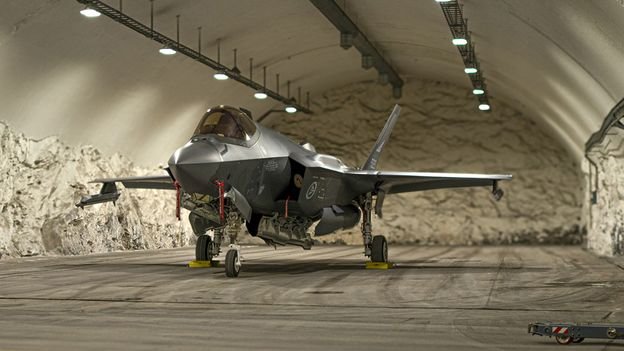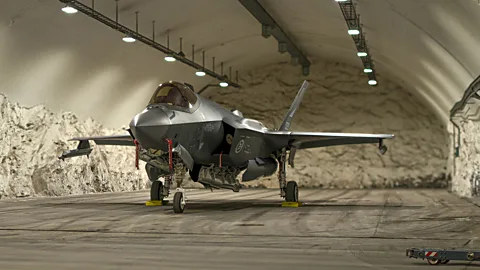 Norwegian Armed Forces
Norwegian Armed ForcesNorway’s proximity to the USSR during the Cold War led to it building many military bunkers – some of them vast secret bases for planes and ships. Tensions with Russia have brought the bunkers back into focus.
Tourists in their hundreds of thousands visit northern Norway each year. But there is a secret world they never see. For hidden away in mountain caverns are jet fighters and nuclear submarines.
Norway is a land with many bunkers. At the peak of the Cold War, the sparsely populated, mountainous country had around 3,000 underground facilities where its armed forces and allies could hide and make life difficult for any invader. Dating back to when the Scandinavian country was part of Hitler’s Atlantic Wall during World War Two and even earlier, their existence was barely known to the Norwegian public.
Now as a European war engulfs eastern Ukraine, Norway is reactivating two of their most iconic underground structures of the Cold War.
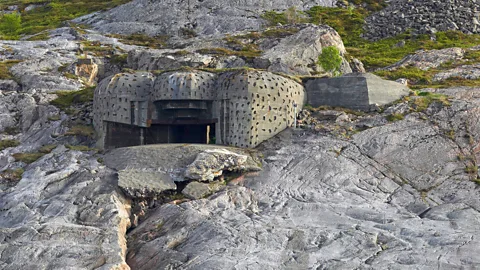 Alamy
AlamyWhy are these huge bunkers needed today? The Soviet Union – the reason they were built in the first place – no longer exists. Does it really make sense to pour money into such expensive structures?
In the publicity shots for the reactivation of Bardufoss hangars, the Lockheed Martin fighter – the F-35 Lightning II – perches menacingly like a bird of prey under the spot lights of the hangar’s arched roof. Opened in 1938, the air station was once used by German fighters protecting the giant battleship Tirpitz while it was anchored in a nearby fjord.
After the war, the Royal Norwegian Air Force then used its mountain hangars to protect its fighter planes from a possible Soviet attack. These hangars included everything the planes and their pilots needed, such as fuel storage, weapon storage, space for maintaining the aircraft systems, and crew areas. Then around 40 years ago it was closed down and mothballed.
Now, Bardufoss looks like it may be needed once more.
Instead of placing tyres on wings or constructing hangars out of wire mesh, as the Russians have done in Ukraine, the drone threat can be limited by dispersing targets to many different locations, or, even better, by keeping the aircraft safe in hardened shelters – the hardest of which is a mountain.
All it takes is one look at the map to explain why Olavsvern naval base was built. Located close to where the Norwegian Sea meets the Barents Sea, the 400 miles (650km) or so between Norway’s coastline, Bear Island and Svalbard is sometimes called “the Bear Gap” because this was, and still is, a choke point for Russian submarines and warships hearding out to the Atlantic.
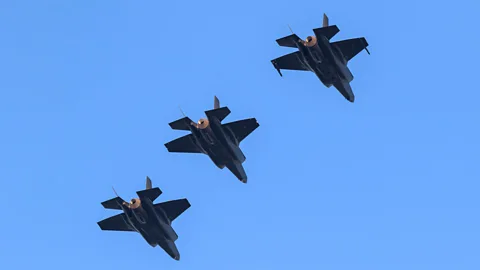 Alamy
AlamyBut it was no white elephant. Despite the slow thawing of the Cold War, Nato vessels still used it as a staging post for missions in the frigid Arctic Ocean.
The reason for the reactivation of these bases is simple: Russia.
Norway’s security concerns didn’t start in 2022 – when Russia invaded Ukraine – or in 2014, when it invaded Crimea, but even earlier. “In around 2006-2008, there was a confluence of things. There was a lot of investment going into Russia’s Northern Fleet,” says Andreas Østhagen, a senior research fellow at Fridtjof Nansen Institute, a Norwegian foundation, “along with the resumption of Russian military exercises in the Arctic for the first time since the Cold War, and Russia’s growing interest in the exploitation of Arctic resources”.
“Putin’s Russia is not the Soviet Union,” Østhagen adds. “But from a Norwegian security point of view there are the same issues. How do you deter Russia and, if you end up in a war, how do you fight Russia?”
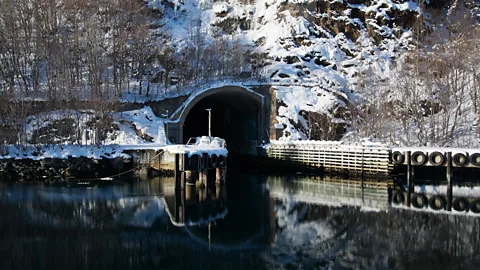 Alamy
AlamyThe Norwegians aren’t the only ones reactivating Cold War bases. The Russians have also in recent years reactivated around 50 Cold War bases of varying kinds across the Arctic. The Swedish navy has returned to its underground naval base on Muskö island, about 25 miles (40km) from Stockholm.
“The psychology of nuclear bunkers is really, really powerful,” says independent cold war researcher, and military blogger known as Sir Humphrey, the blogging name of the author of the Thin Pinstriped Line blog, which studies the Cold War. “I think they are deeply rooted into our psyche and our understanding of the Cold War, particularly of a Dr Strangelove command centre with an out-of-control general sitting there.”
“Placing boats and subs [and planes] in tunnels can still be a great way to protect them from a vertical aerial bombing attack,” says Paul Ozorak, author of Underground Structures of the Cold War, “even if bunker-busters are used, if vulnerabilities are addressed, through for example the use of blast doors”.
But counties such as the UK may be reluctant to follow Norway’s lead in reactivating underground bases or building new ones because of the vast expense, says Ozorak.
Many of the Cold War underground structures in the UK and other Nato countries have been sold off to become museums, or even nightclubs. Some have been destroyed. At least one has been sealed shut. Many more will have been flooded and be physically unusable, the concrete rotten and no longer blast-proof.
“The big challenge in reactivating those that remain would be the cost,” says Ozorak. “In many cases, these bunkers were stripped of all their equipment. To reinstall this equipment and to re-lay communication cables would be very expensive. To re-acquire them would also be expensive.”
 Norwegian Armed Forces
Norwegian Armed ForcesThere is also the problem that if they have been deactivated like Olavsvern then their security may have been compromised by foreign intelligence services, even if they haven’t had visits from Russian survey ships.
“There are also limited operational benefits of a site that everyone knows exists and that has been a target for 60 years, and where satellite imagery can now spot the ventilation shafts and entry points,” says Sir Humphrey.
“They were designed to be blast-proof against a [nuclear] bomb going off nearby,” he adds, “and not someone dropping a GPS-guided bomb down its ventilation shaft”.
However, in the UK, the RAF Air Command bunker built during the Cold War in Buckinghamshire is still in use, as are the bunkers that make up Northwood Headquarters, a military headquarters in north-west London, rebuilt in 2006-2011.
The British Cabinet Office, on national security grounds, started to reclassify and withdraw documents on nuclear war planning that had been released after the Cold War had ended.
Russia’s invasion of Ukraine shocked many people. “In the end, if you are afraid of a surprise attack the natural inclination is to go underground,” says Ozorak.


